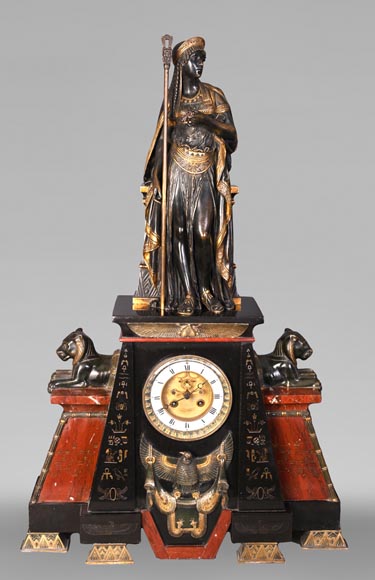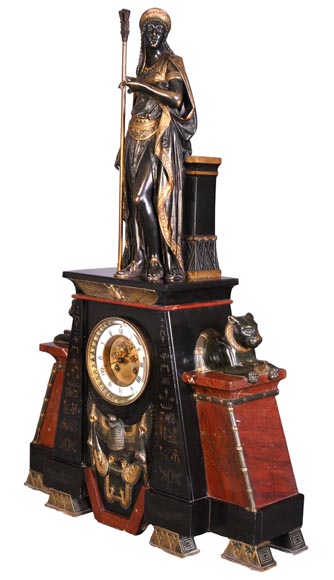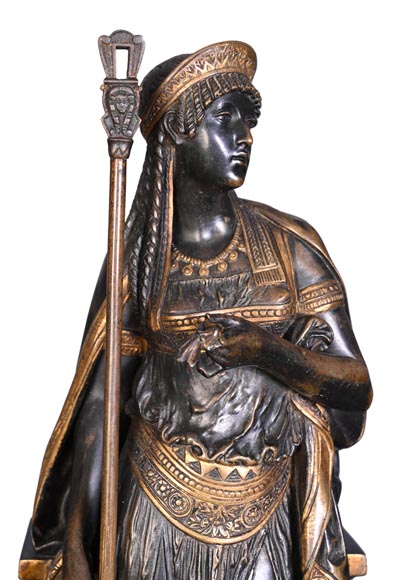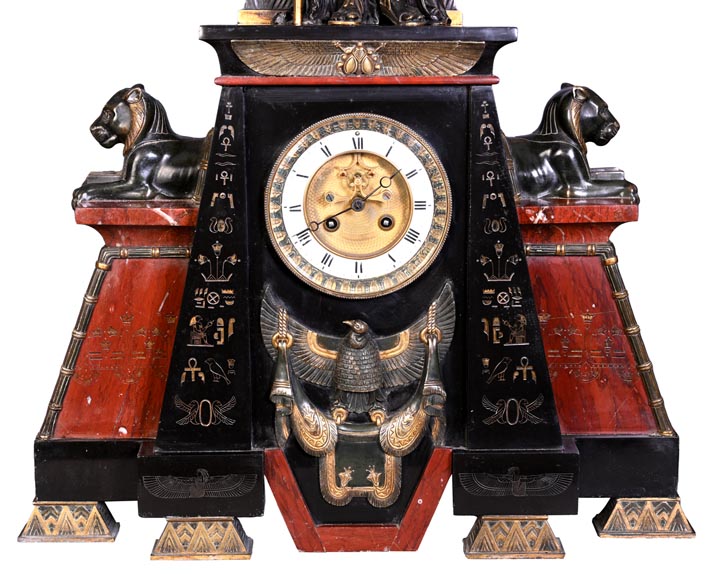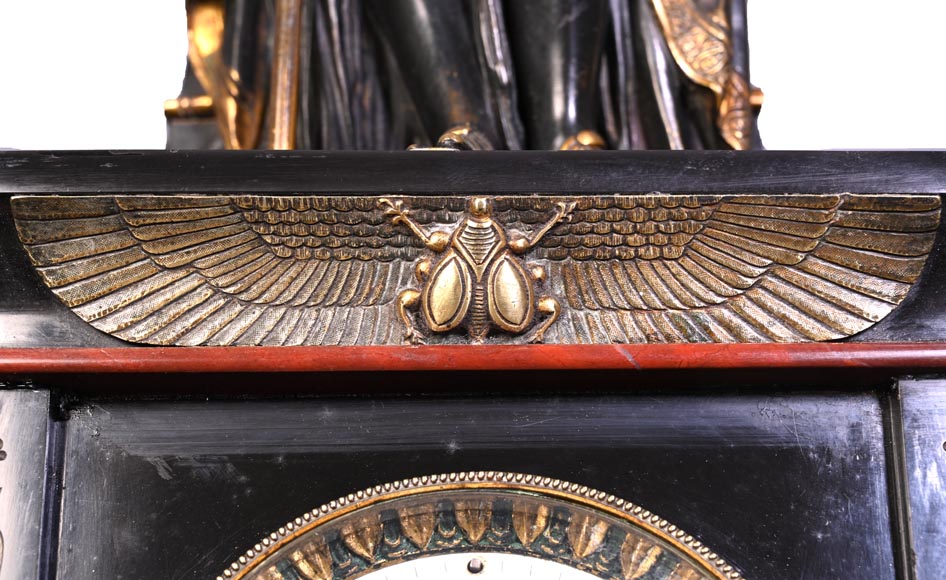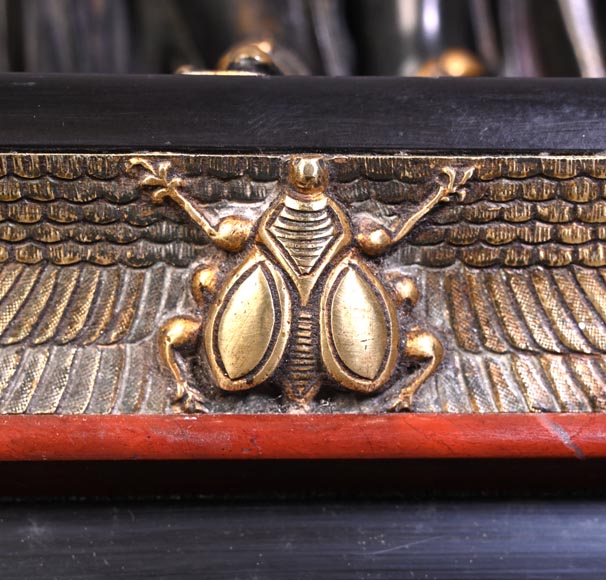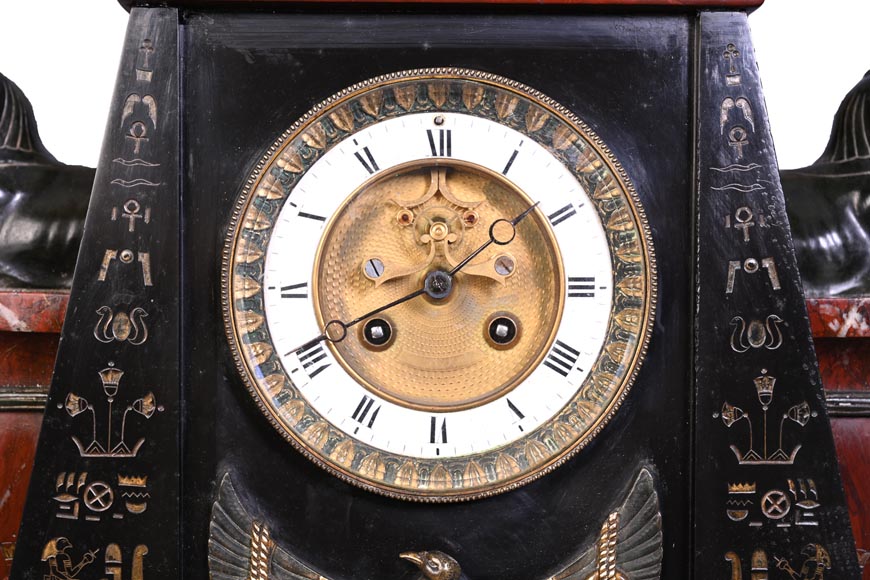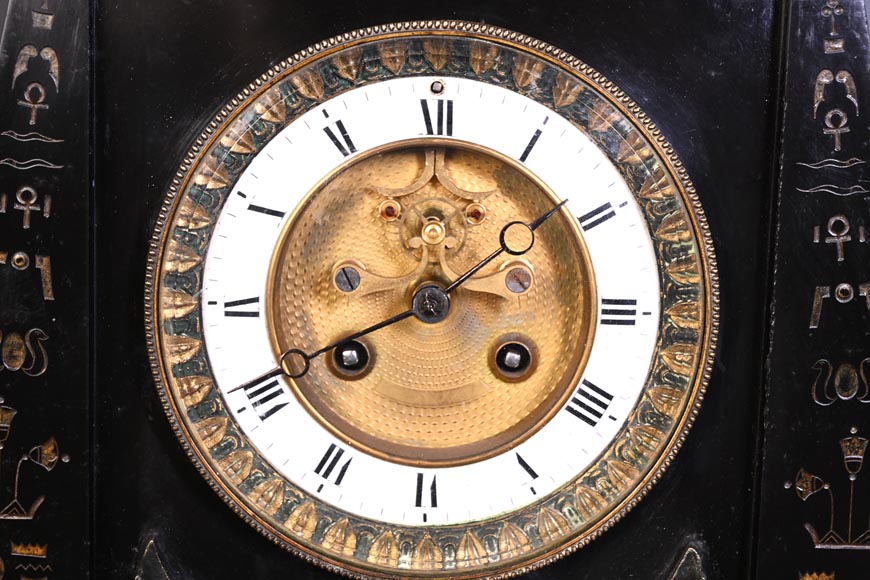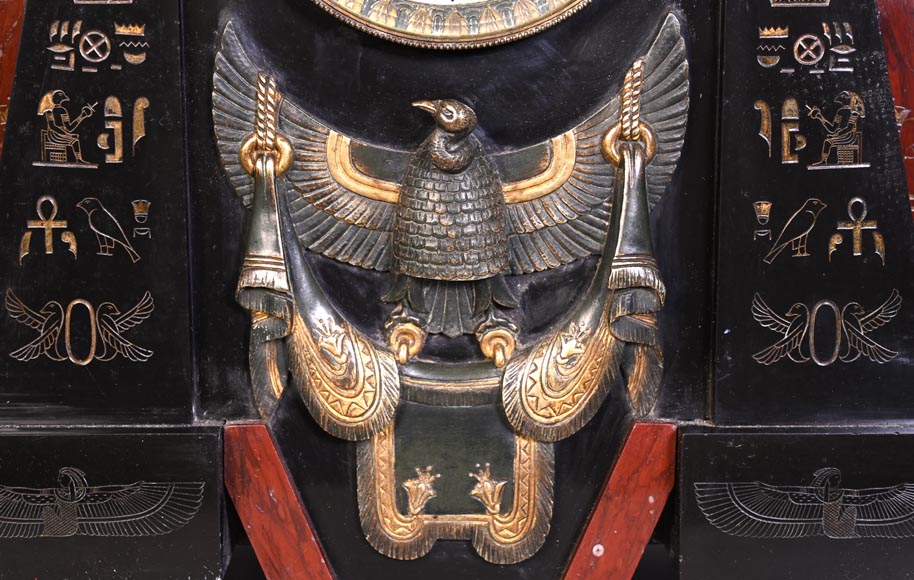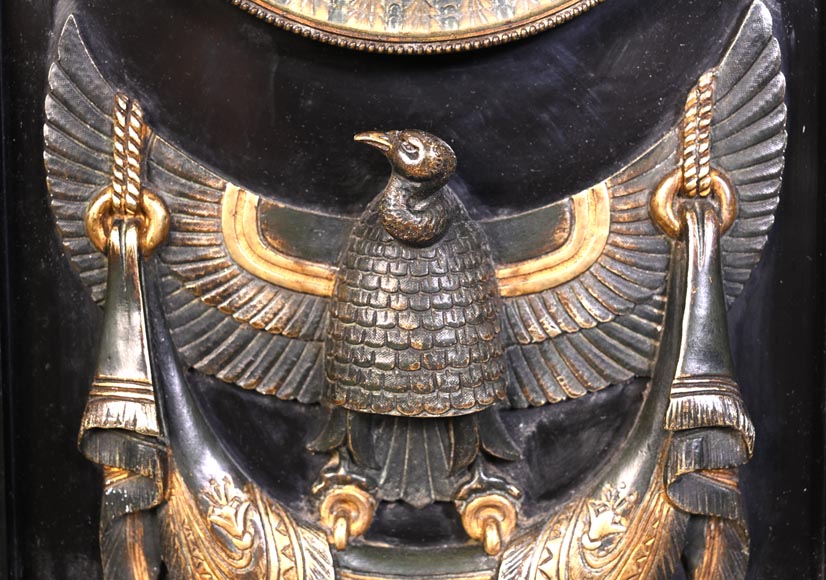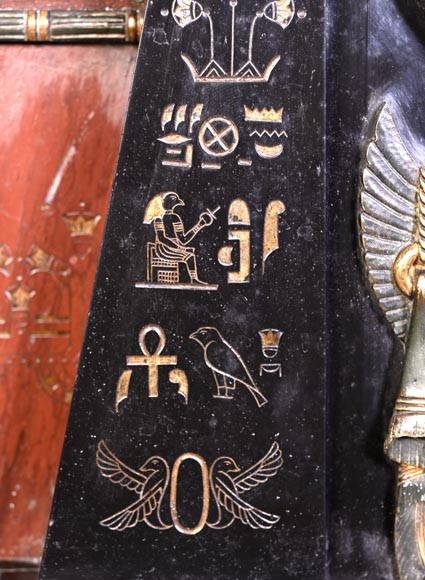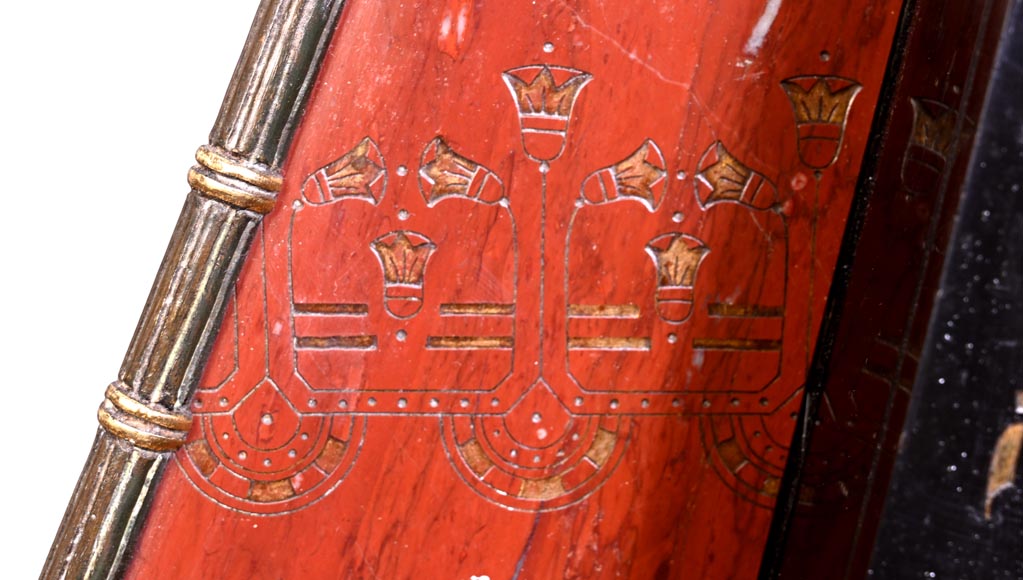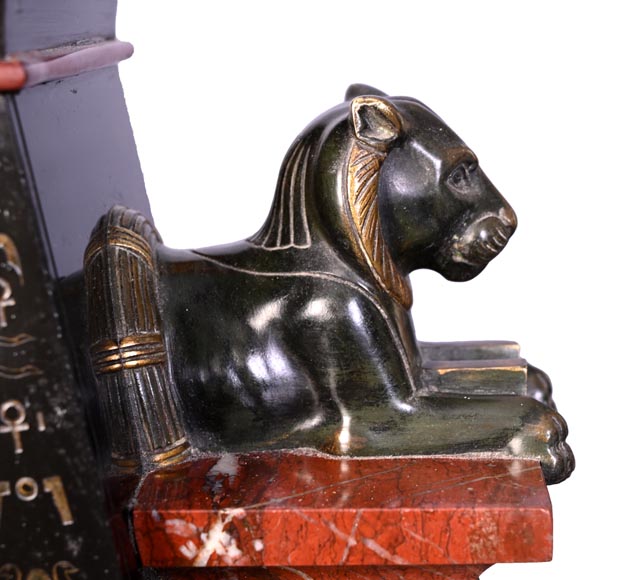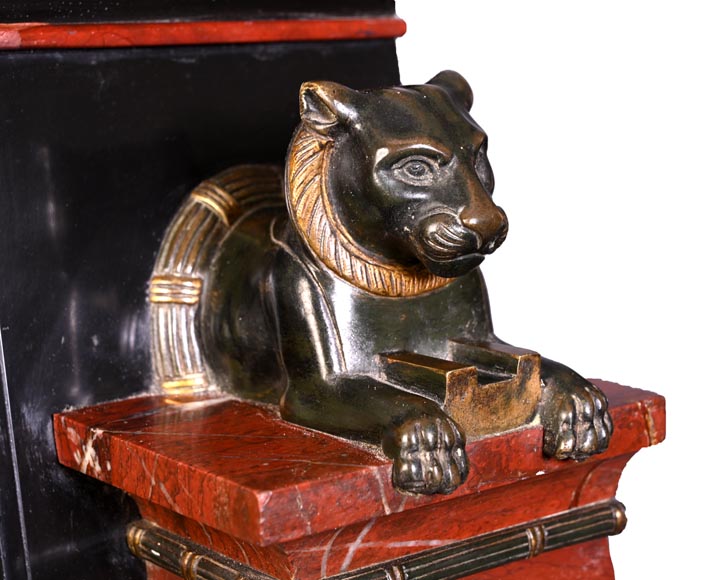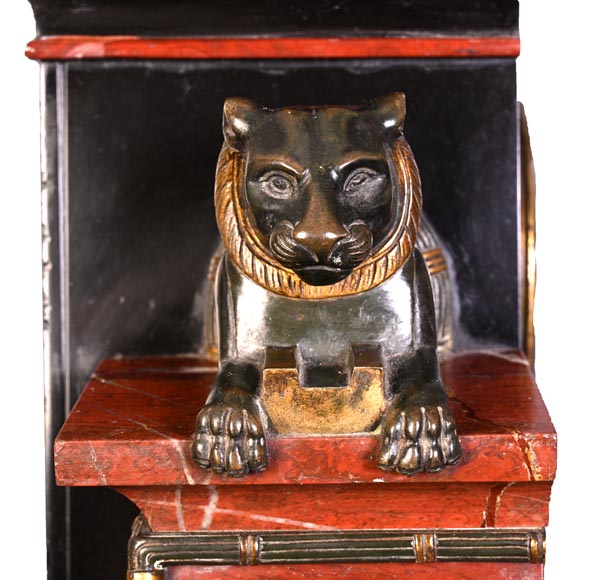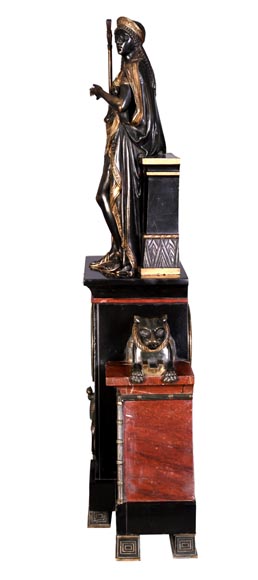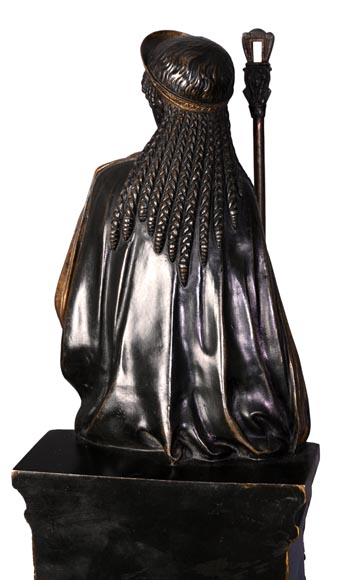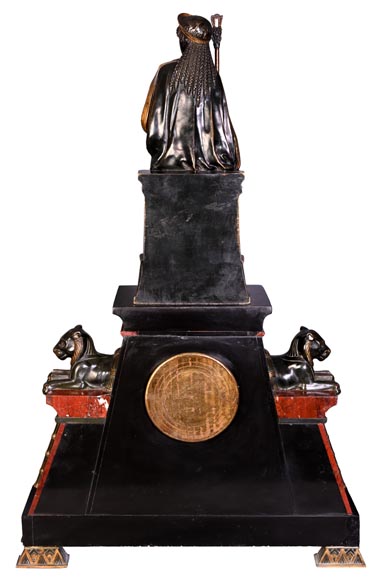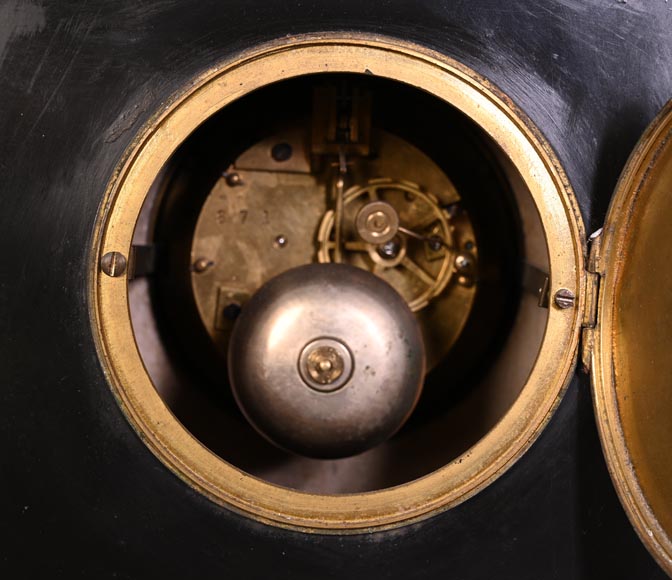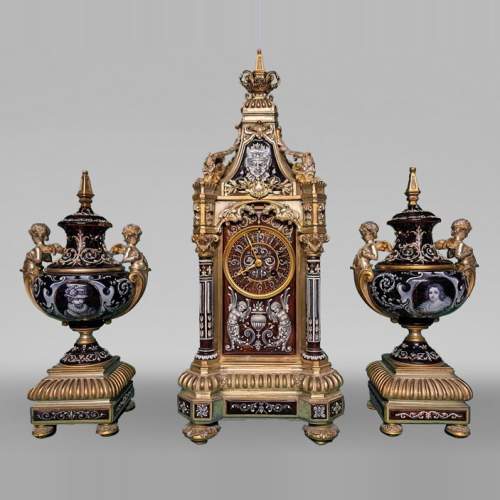Style Egyptian / Ref.15678
Emile Hébert and Georges Servant, Egyptian Revival Clock, 19th Century
Dimensions
Width 19'' ¼ 49cm
Height 29'' ½ 75cm
Depth: 6'' ¼ 16cm
This beautiful clock by Georges Servant and Emile Hébert is in the Egyptomania style and dates from the 19th century. It is composed of patinated and gilded bronze elements as well as Griotte red and black Onyx marbles. At the top of a pyramidal plinth with a flared base is a magnificent Cleopatra dressed in Egyptian rather than Greek style – which is perfectly in keeping with the way the Queen Pharaoh was portrayed in the 19th century. She is recognisable in particular by her Was – the sceptre with the head of Seth that pharaohs possessed – but also by the lotus flower that she nonchalantly holds in her delicate hands. This flower, which is a symbol for renewal and the circle of life in ancient Egypt, appears several times in representations of Cleopatra contemporary with this clock – almost like an attribute.
The circular dial is framed by stylised hieroglyphs and surmounted by a winged sun disc with a scarab at its centre. Two crouching lions adorn the sides, symbolising royalty. On the back of the piece, the artist has chosen to depict the goddess Isis, whom the pharaohs regarded as a maternal and protective figure.
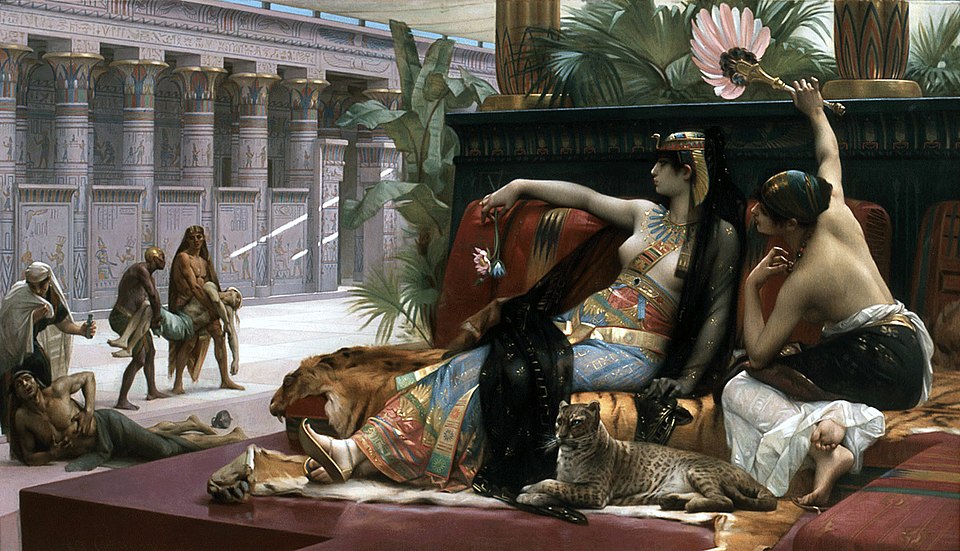
Alexandre Cabanel, Cleopatra Trying out Poisons on Men Sentenced to Death, oil on canvas, 1887, collections of the Royal Museum of Fine Arts Antwerp, All Rights Reserved
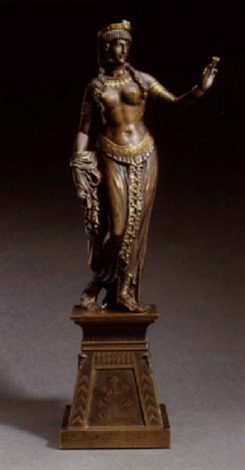
Jean-Baptiste Clésinger (1814-1883), Cleopatra offering a lotus flower to Antony, bronze
In 1855, Georges Servant (1828-c. 1890) took over his father's foundry on rue Vieille-du-Temple in Paris. His work revolved around decorative objects in the Greek and Neo-Egyptian styles, in response to the growing Egyptomania of the second half of the 19th century. The bronzier's talent was recognised on many occasions, notably at the Paris Universal Exhibitions in 1855, 1867 (gold medal), 1874 (Chevalier de la Légion d'honneur) and 1878 (member of the jury). His presence was also noticed abroad, whether through his participation in the Universal Exhibition in London in 1862 or his sales of sphinx clocks to Louis C. Tiffany and Hamman & Roche in the United States.
As to Emile Hébert (1828-1893), he was a his father Pierre Hébert’s and Jean-Jacques Feuchère’s student. He exhibited at the Salon des artistes français from 1849 until his death, and also at the Universal Exhibitions of 1855, 1867 (gold medal) and 1878 (gold medal). The neo-Egyptian subjects are typical of his work and contributed greatly to his success. In the 1878 jury report, it was stated that “Hébert's chiseling is masterfully handled and is much appreciated by artists”.
The two artists are known to have exhibited works together at several World's Fairs, including clocks in the same Egyptomania style as the one presented here.
Informations
Price: on request
Recommended for you :
Dimensions:
Width: 22
Height: 53
Depth: 19
Dimensions:
Width: 28
Height: 90
Diameter: 21
Dimensions:
Width: 38
Height: 79
Depth: 42
Dimensions:
Width: 28
Height: 57
Depth: 13
Dimensions:
Width: 38
Height: 49
Depth: 22
Dimensions:
Width: 38
Height: 69
Depth: 11
Dimensions:
Width: 33
Height: 46
Depth: 17
Dimensions:
Width: 47
Height: 84
Depth: 25
Dimensions:
Width: 31
Height: 35
Depth: 19
Dimensions:
Width: 20
Height: 44
Depth: 9
Dimensions:
Width: 133
Height: 119
Depth: 25
Dimensions:
Width: 32
Height: 37
Depth: 20



